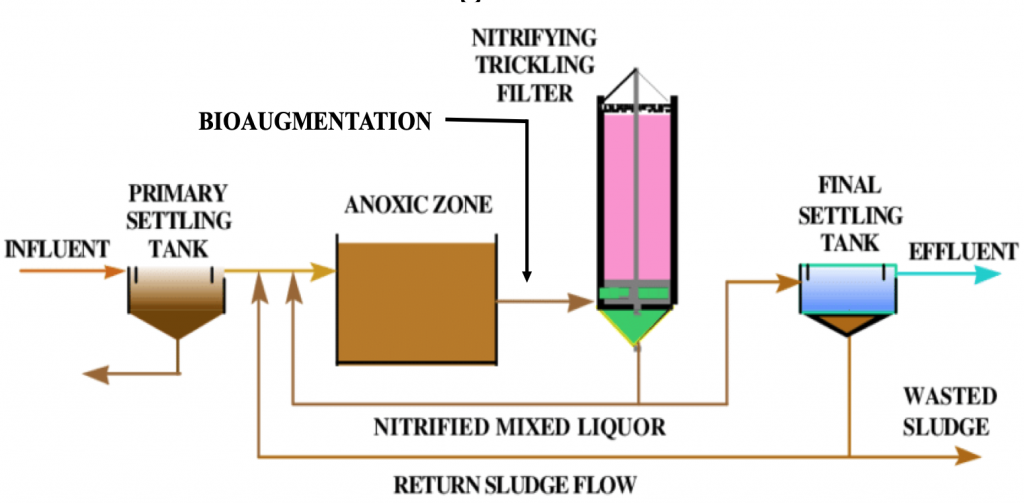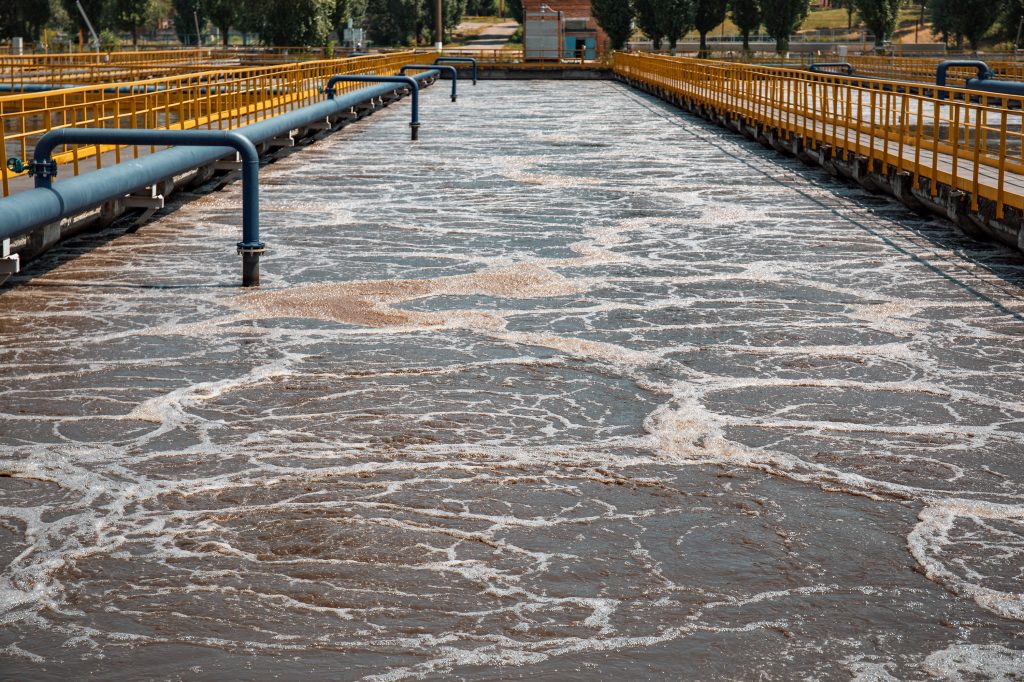Mechanical WWTP .2 MGD
Augmenting wastewater processes with cultures of nitrifying bacteria can increase abundance and nitrification efficiency correspondingly. Additionally, implementing organic matter degrading microbiology in a system can increase the time available for bacteria to oxidize ammonia.1
The following case study describes the efficacy of BioLynceus® bioaugmentation for improving nitrification in an activated sludge system with fixed media trickling filters.
Augmenting wastewater processes with cultures of nitrifying bacteria can increase abundance and nitrification efficiency correspondingly. Additionally, implementing organic matter degrading microbiology in a system can increase the time available for bacteria to oxidize ammonia.1 The following case study describes the efficacy of BioLynceus® bioaugmentation for improving nitrification in an activated sludge system with fixed media trickling filters.

Figure 1. Combined activated sludge and trickling filter system with direct feeding of the trickling filter with activated sludge mixed liquor to conduct better ammonia removal. Inoculation point of case study bioaugmentation is indicated (Modified from Soriano et al. 2014).2
In need of a solution to promote ammonia removal, the supervisor at the plant contacted BioLynceus®. A specialized bioaugmentation plan was designed for the facility. ProBiotic Scrubber® N (PBN), a live culture product abundant in nitrifying bacteria and organic substrate degrading microbes, was implemented just ahead of the plant trickling filters.
After a few days of treatment, the biology in the system was properly nitrifying. Ammonia concentrations in the effluent were decreased.
Additionally, BioLynceus® bioaugmentation helped the plant stay in compliance with their ammonia permit. The activated sludge facility continued to use PBN from May to October to promote efficient nitrification in their trickling filters.
Establishing an effective community of nitrifying bacteria in wastewater treatment systems can be challenging. This process is most efficient in the correct environmental conditions, excluding extreme temperatures and pH.
Beyond the physical factors impacting nitrification in wastewater processes, maintaining a high abundance of nitrifying and organic matter degrading organisms is essential for optimal ammonia conversion. Nitrification is often the rate- limiting reaction in wastewater treatment.3
This process has low energetic yield for nitrifying bacteria which impacts growth rates and abundance. Because of this, these bacteria require a high residence time in the aerobic process to oxidize ammonia properly.
Bioaugmentation, like the treatment used in the case study above, can be a helpful solution to improve nitrification in activated sludge processes.
BioLynceus® ProBiotic Scrubber® N promotes nitrification in activated sludge processes.
1 Kirchman, D. L. (2012). Processes in Microbial Ecology. New York: Oxford University Press Inc. Pp. 228, 229.
https://global.oup.com/academic/product/processes-in-microbial-ecology-9780198789413?cc=us&lang=en&
2 Soriano, A. G., Audic, J. M., McCarley, S., Ekama, G., & Wentzel, M. (2014). Options for the Upgrading of WWTP’s by Means of Trickling Filters. Retrieved at https://www.researchgate.net/publication/228598263_ OPTIONS_FOR_THE_UPGRADING_OF_WWTP%27s_BY_MEANS_
3 Gerardi, M. (2016). Wastewater Bioaugmentation and Biostimulation. Lancaster, Pennsylvania: DEStech Publications, Inc. Pp. 20, 64. https://www.amazon.com/Wastewater-Bioaugmentation-Biostimulation-Michael-Gerardi/dp/1932078789



